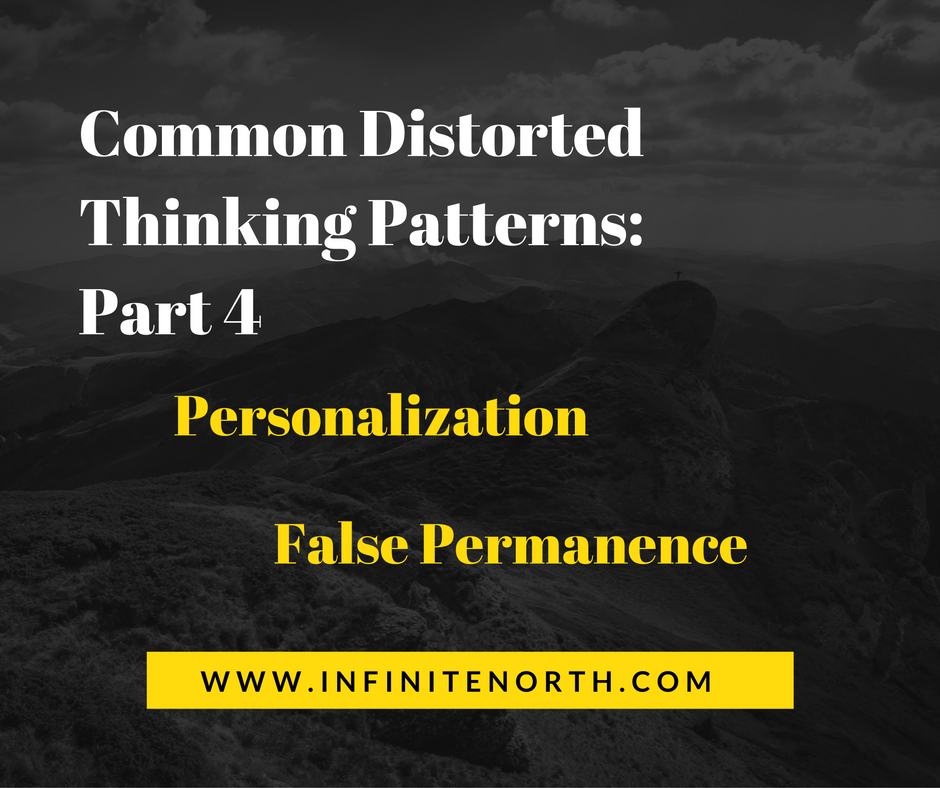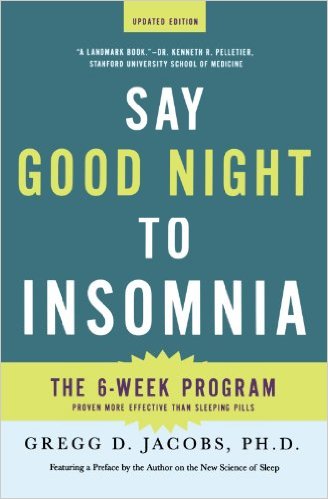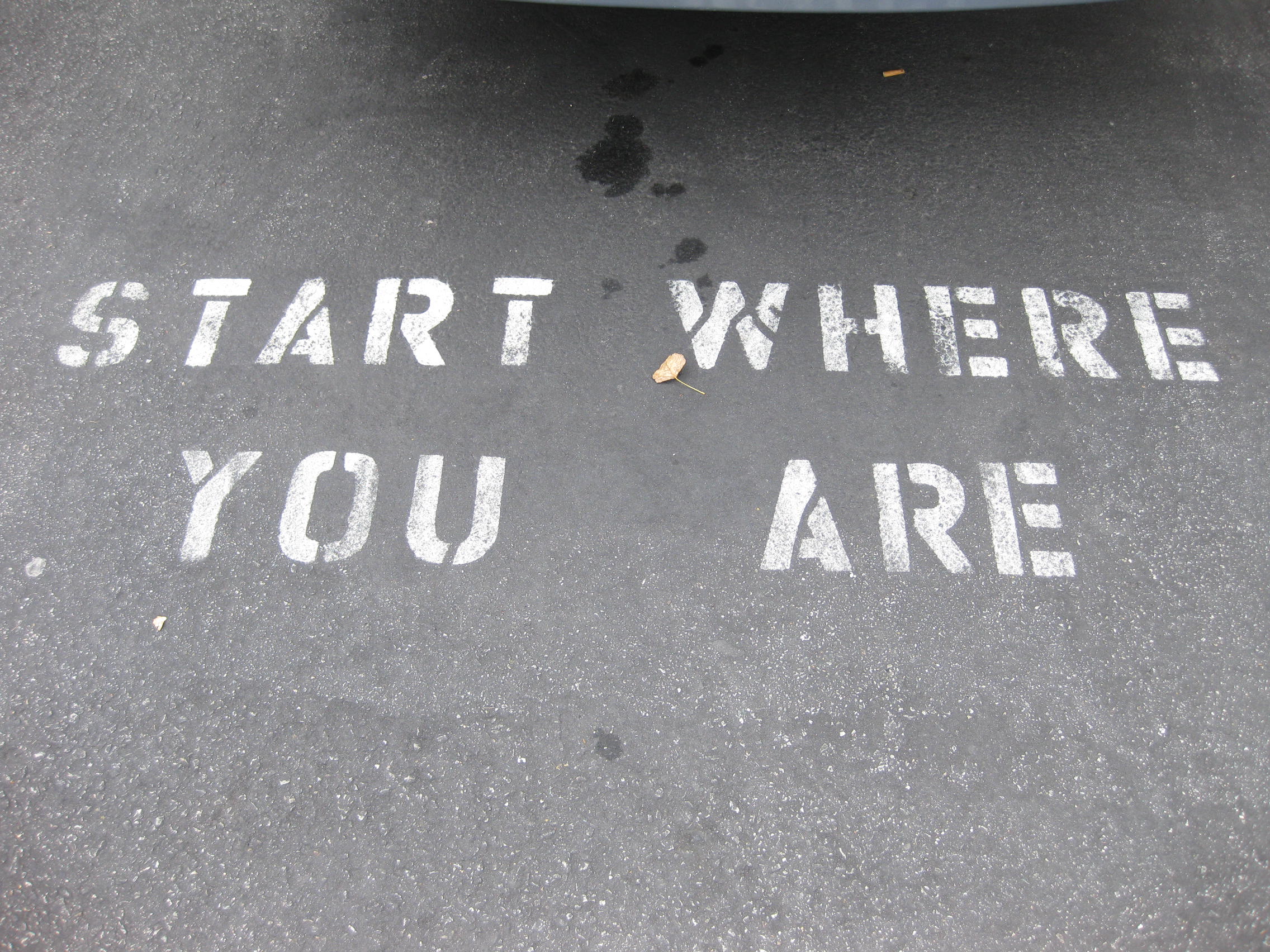In the first three installments we explored distortions that created catastrophes from our imagination and another that was the least helpful filter ever then we looked at how the polarization of thought impacts us and the dramatic limitation of “mind-reading.” Then, it was on to Emotional Reasoning and Should Statements. Today we cover Personalization and False Permanence
- Catastrophizing
- The Mental Filter
- Black-and-White Thinking
- Mind-Reading
- Emotional Reasoning
- ‘Shoulding’
- Personalization
- False Permanence
- Blaming
- Magical Thinking
Let me remind you – as you begin to challenge these distortions, for effective change, take the time to write down the specific unhelpful thoughts as you recognize them and write down the alternative thinking patterns that will set you on the path to healthier ways of perceiving your experiences. You’ll see overlap in how these patterns feed into one another, each one making the others a little easier to believe, creating a seemingly unified (albeit distorted) vision of life. Don’t be fooled.
- Personalization: Not every mistake is your fault, and even if it is your fault, it doesn’t mean you’re bad, stupid, or incompetent. Personalization begs to differ. This distorted thinking pattern tells you that every misstep is attributable to you as a person; every mistake in your life is indicative of some shame-inducing character flaw. It tells you that when your kids misbehave at school, it means you’re horrible parents. When we don’t get invited to the party, it’s because we’re worthless. When we get rained on it’s because the world hates us. Personalization invites us to take every perceived slight, criticism, or inconvenience as an attack on our humanity. A disagreement is an insult. A furrowed brow is a harsh judgment of your decisions. This distortion can also be flipped towards others and generally wreaks havoc on interpersonal relationships. If you assign global characteristics based on isolated behaviors, you’re likely to create patterns of judgment and criticism. If forgetting to feed the dog means your partner is an idiot, you’re relationship is in trouble. If arriving late means your in-laws are inconsiderate and selfish, it’s going to be tough to fully enjoy Thanksgiving dinner.
Challenging Personalization: While I encourage everyone to take personal responsibility for their own decisions, challenging personalization requires a clear line to be drawn between what is and isn’t you’re responsibility. More important than taking responsibility only for yourself, is the practice of attributing consequences accurately. What does that mean? It means we all need to practice explaining circumstance, situations, and other people’s choices is a way that is not destructive to our own sense of self-worth. Attribute random events (birds pooped on your car, the bus was late, you were cut off in traffic) to the lottery of the universe. No more. No less. Recognize that no one is out to get you. The birds don’t have it out for you. God doesn’t hate you. It didn’t happen because you are inherently bad or deserving of misfortune. Work to accept the fact that poop happens – even to good people. Attribute apparent personal attacks appropriately too. When your friend, partner, child, coworker, or some stranger is having a bad day and treating you poorly, it doesn’t mean that you’re being a horrible person. Assess our own behavior, and make necessary course corrections, but don’t assume that their bad day means that you’re inadequate. In concrete terms, describe the situation, validate your emotional experience, resist, refute, or redirect when global labels pop up, then take decisive values-based action.
For example, if I’m not invited to the party…
Rather than beating myself up because I’m clearly a worthless friend (that’s distorted personalization) that no one wants to be around (and that’s mind-reading), I 1) describe the situation (without judgment): I wanted to go to the party and I didn’t get invited, 2) validate my experience: I feel hurt, lonely, and rejected…it’s painful, 3) take values based action: I value my health and challenges, so I’ll take this time to jump on the treadmill. Notice the lack of judgmental name-calling directed at myself or the host of the party. Also, no assumptions were made about anyone’s intentions.
- False Permanence: One sure way to create stress, anxiety, hopelessness, and despair is indulging in the distorted concept of false permanence. This particular pattern often appears as a combination of black-and-white thinking and catastrophizing along with a paralyzing perception of permanence. It’s clear how this type of false permanence could lead to emotional discomfort. “Everything is bad and it always will be!” sets you on a clear path to hopelessness and despair. If we eliminate the possibility of change, the current circumstance can never improve; we can never grow; our efforts to initiate change will feel worthless.
Conversely, falsely assuming positive experiences and emotions will remain permanent can also lead to significant distress. “Everything is perfect and always will be!” can set you up to fall hard when changes occur. The lack of psychological flexibility is at the core of this distortion. Clinging to any moment with an unwillingness to accept change will result in unnecessary suffering.
Challenging False Permanence: Accept the present moment and embrace the certainty of change. Whether the experience is comfortable or uncomfortable, work to accept it as it is, letting go of expectations (especially judgmental expectations). Mindfulness exercises can help build the skills necessary for nonjudgmental observations. In conjunction with the effort to accept, embrace some version of the mantra “Nothing is forever,” “This too shall pass,” “Change is inevitable,” or “Live for the possibilities of today.” In other words, actively remind yourself that your reality IS NOT permanent. Throughout this process it’s important to be kind and compassionate with yourself, working to avoid other thought distortions, while encouraging yourself and seeking healthy support.
As you challenge this particular pattern, be careful to apply it to only to your mental or emotional experiences. There are certain aspects of life that are permanent. Certain types of loss, such as death, are permanent, and that is not a distortion. The thoughts and feelings associated with those losses, however, are fluid and ever changing. It can be easy to fall into the trap of connecting the real permanence of death with false permanence of the emotional experience. This comes up with many permanent or mostly-permanent losses – death, break-ups, job loss, relocations, etc. Even if these changes are permanent, the emotional experience never is. It always changes. Challenging this pattern is about recognizing, anticipating, and appreciating the ups and downs we’ll all face.
Next up, we’ll tackle Blaming and Magical Thinking, and we will have gotten through all ten of the most common distorted thinking patterns. Part five will also include a downloadable PDF compiling all of the blog posts.










